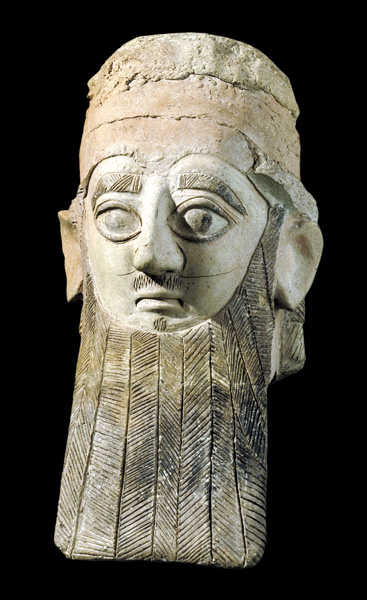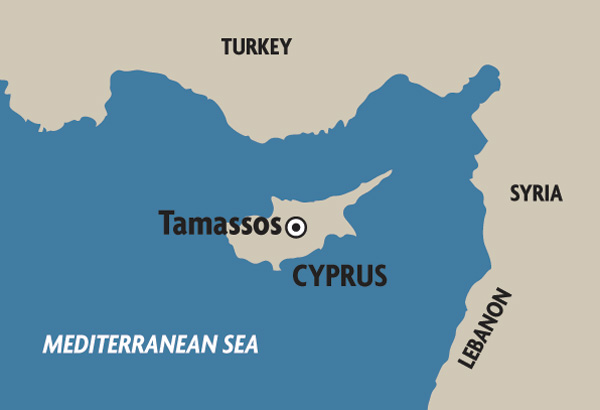
More than 3,500 years ago, this 14-inch-tall, painted terra-cotta depiction of a bearded man, which was once part of a complete statue of a standing worshiper, faced the altar of the temple of Apollo near the ancient city of Tamassos on the island of Cyprus. The figure, which dates to around 600 B.C.E., was a votive statue of the owner, possibly originally standing more than 6 feet tall, that was placed in the sanctuary to represent his perpetual worship of the resident god. It was hoped that by dwelling in the houses of gods, such lifelike votives would bring the worshiper permanent protection.
Despite having been made in Cyprus, the piece shows features more common to the art of the Assyrian empire of Mesopotamia, which controlled Cyprus from about 707 to 612 B.C.E. Most recognizably Assyrian are the man’s long, squared-off beard, his prominent, well-defined nose, eyebrows and facial features and his emotionless, almost severe, expression. After the decline of the Assyrian empire, Cypriot votive statues remained popular in shrines across the island, although artists quickly abandoned Near Eastern styles in favor of Greek sculptural traditions.

Already a library member? Log in here.
Institution user? Log in with your IP address.

